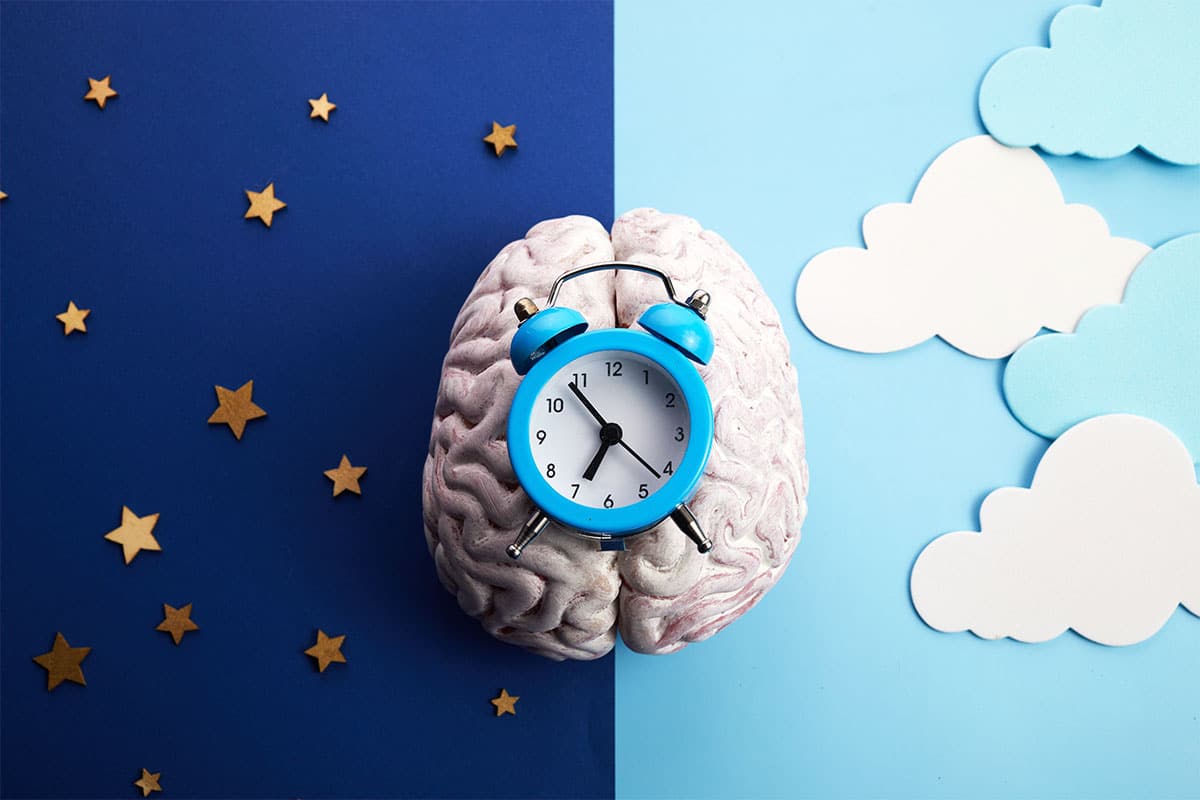
Are you getting good quality sleep? Or are you waking up a lot through the night and feeling sluggish, groggy, or irritable in the morning?
Disrupted sleep cycles may be to blame.
The number of hours of sleep you get each night is important – but this is not the whole story.
Sleep is not a homogenous state. There are distinct stages of sleep, and we cycle through these, in order, several times each night if we are getting good quality sleep. The different sleep cycle stages play important roles in the health of your body and mind – and it is important that you cycle smoothly through these for high-quality, restorative sleep.
What is the Sleep Cycle?
The sleep cycle is a natural effect of the internal body clock. It is based on the regularly occurring brain wave patterns which we all experience during sleep, and a normal, healthy sleeping pattern will cycle through these stages in a specific order, ideally with each cycle completed before waking.
A single sleep cycle involves four distinct stages (as defined by the American Academy of Sleep Medicine) and lasts for an average of ninety minutes (but as few as seventy and as many as one hundred and twenty). The average adult experiences four to six sleep cycles over a healthy seven-to-nine-hour night of sleep.
The first sleep cycle of the night is usually the shortest, and the time spent in each stage of the sleep cycle changes as the night progresses.
Each stage has its own characteristics and importance – and as such, being able to complete natural sleep cycles without waking prematurely is important for waking refreshed and feeling (and functioning at) your best.
Sleep Cycle Stages
- Stage 1 is known as light sleep. For healthy sleepers, it lasts an average of only five to ten minutes. The mind and body relax and become drowsy during this stage.This stage of sleep is where you “doze off” and is characterised by Alpha brain waves. The body may twitch, and it is easy to be woken from this state. This is partly why a power nap of twenty minutes or less can be very refreshing. (Waking from deeper sleep can make you feel groggy).
- Stage 2, also considered to be light sleep, transitions from dozing to legitimate sleep and lasts between ten and sixty minutes; it sees the brain waves, muscle activity, and eye movements decrease as the mind prepares for deep sleep. Sudden short bursts of brain wave activity (“sleep spindles”) occur and are believed by scientists to be important for sensory processing and the consolidation of long-term memories. As such, most of our memories are formed during the second stage of sleep.
Around half the total time asleep is typically spent in Stage 2 sleep, which is important for physical and mental restoration.
- Stage 3 is slow wave (or Delta wave) sleep. This is the deepest sleep stage, lasting between twenty and forty minutes, and is the most difficult to be woken from. The body is entirely relaxed and blood pressure, breathing rate, and body temperature all become significantly lower during these stages.
This deepest sleep stage is when the body undergoes several processes critical for growth, repair, and recovery – including hormone production, immune regulation, muscle repair, and many others.The first half of the night is when we spend the most time in this deep, extremely restorative sleep stage. Not enough time spent in Stage 3 sleep, or waking from Stage 3 sleep, can cause daytime tiredness and grogginess.
- Stage 4 is REM (rapid eye movement) sleep and it can last from ten to sixty minutes. Though still quite deep asleep, the brain experiences neurological responses similar to being in the awakened state, and this is also when we dream the most. Essential for cognitive functions, it is during REM that the brain deeply processes, consolidates, and stores information that becomes long-term memories. This stage is vital for learning and creativity. Heart rate, breathing rate, and blood pressure increase during REM. The body is virtually paralysed in this stage – a biological safety measure to prevent us from acting out our dreams.
We spend an average of a quarter of our total sleeping time in REM sleep. Scientists believe these Stage 4 cycles are longer later in the night, and also that older people spend much less time in REM than children and infants do.Contrary to popular belief, dreaming can occur during any stage of sleep, but REM or Stage 4 is when it is more common and the dreams are more vivid. Waking from REM often enables the person to recall their dream more clearly and for longer.
An uninterrupted sleeper will usually cycle straight from REM back into Stage 1 very briefly before continuing with the next sleep cycle.
Which Sleep Cycle Stages are Most Important for Quality Sleep?
Every sleep stage is important for different reasons, and healthy sleep requires cycling smoothly through each stage. This allows the body and brain to develop and recuperate properly.
Sleep scientists currently believe, however, that Stage 3 sleep is the most critical for growth and recovery. It is here that the immune system is bolstered, and it is also crucial for memory, creativity, and thinking.
Disrupted sleep cycles can have negative impacts on emotional, psychological, and physical health and well-being.
What Disrupts Sleep Cycles?
- Age has a dramatic impact on sleep cycles – infants, for example, spend half their sleeping time in REM sleep. Elderly people spend the shortest amount of time in REM.
- Caffeine consumed too close to bedtime can make it harder to fall asleep and achieve deep sleep in the first half of the night.
- Alcohol consumption can act as a stimulant and cause wakefulness as the body begins processing it several hours later.
- Snoring and obstructive sleep apnoea both disrupt sleep – often many times a night.
The Impact of Snoring on Sleep Cycle Stages
It is during Stage 2 sleep that the muscles relax enough to allow the tongue to fall back into the throat – the most common cause of snoring. Snoring in turn disrupts sleep. As such, snorers are roused from Stage 2 sleep, frequently for many, and they spend far less time in Stage 3 sleep than they need to. People with severe habitual snoring or sleep apnoea may spend little or no time in Stage 3 or REM sleep – and this is a major problem for ongoing health, performance, and well-being.
Knowing how to reduce snoring and implementing effective changes to achieve this is very important to help maintain healthy sleep cycles and minimise the effects of poor-quality sleep.
Improve Your Sleep Cycles with SnoreMD
Each stage of sleep plays an important role in enabling the mind and body to wake refreshed and perform at their best.
One of the best ways you could improve your sleep and support healthy sleep cycles is to use SnoreMD.
SnoreMD is the Australian brand of a globally renowned, patented anti-snoring device that is worn in the mouth during sleep. It helps to stop snoring by gently moving the lower jaw slightly forward, which opens the airways and enhances smooth breathing.


